Weekly recap
Major stock indices finished last week lower, with the tech sector a notable decliner. The US government said it would add restrictions on chip exports to China, further escalating the trade war between the world’s two largest economies.
Federal Reserve Chair Jerome Powell spoke at the Economic Club of Chicago and warned that tariff increases would likely result in higher inflation and slower growth. He added that the Fed would wait for greater clarity before cutting interest rates again. The tech-heavy Nasdaq fell 2.6% last week.
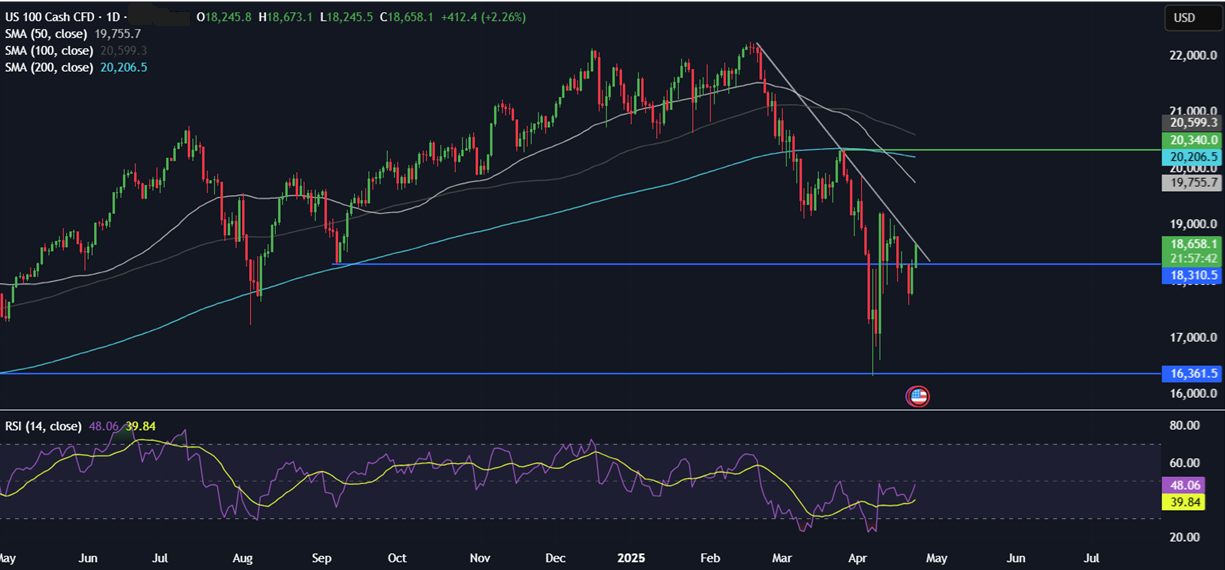
President Trump threatened to fire Federal Reserve chair Jerome Powell, sending stocks sharply lower on Monday and helping Gold to another record high just below $3500 per ounce. Although Trump walked back this threat on Tuesday, saying he had no intention of firing Powell, the drama highlights the uncertainty the Trump administration is bringing.
Last week, the ECB cut rates for a seventh time, bringing the rate to 2.25% amid concerns over the economy’s outlook in light of Trump’s trade tariffs.
Trump trade tariffs developments
Any developments surrounding Trump’s trade tariffs will continue to be the primary driver of market sentiment. Comments from Treasury Secretary Scott Bessent on Tuesday that he expects a de-escalation in the ongoing tariff standoff between the US and China in the very near future helped the market mood recover on Tuesday. This optimism is overshadowing concerns highlighted by Fed speakers of rising inflation and slowing growth. Any sense of a de-escalation of tensions could pull Gold lower. Meanwhile, escalating worries will see the precious metal continue to scale to new record highs.

EZ PMIs (Wednesday)
Eurozone flash manufacturing PMI is expected to fall to 47.1 from 48.6 meanwhile the services PMI is expected to fall to 50.3 from 51 putting the composite PMI which is widely considered a good gauge for business activity at 50.3 down from 50.9 in February. The level 50 separates expansion from contraction. The data comes after April’s ZEW expectations survey tumbled to -18.5 from +39.8, whilst the Sentix fell from -19.5 to -2.9, as the euphoria from the previous month evaporated amid concerns over trade tariffs and policy uncertainty. Weak data could further cement expectations for another ECB rate cut in June, which is currently priced in at around 70%, after the central bank cut rates by 25 basis points last week.
EUR/USD trades at a multi-year high as it tests a key resistance level around 1.15.
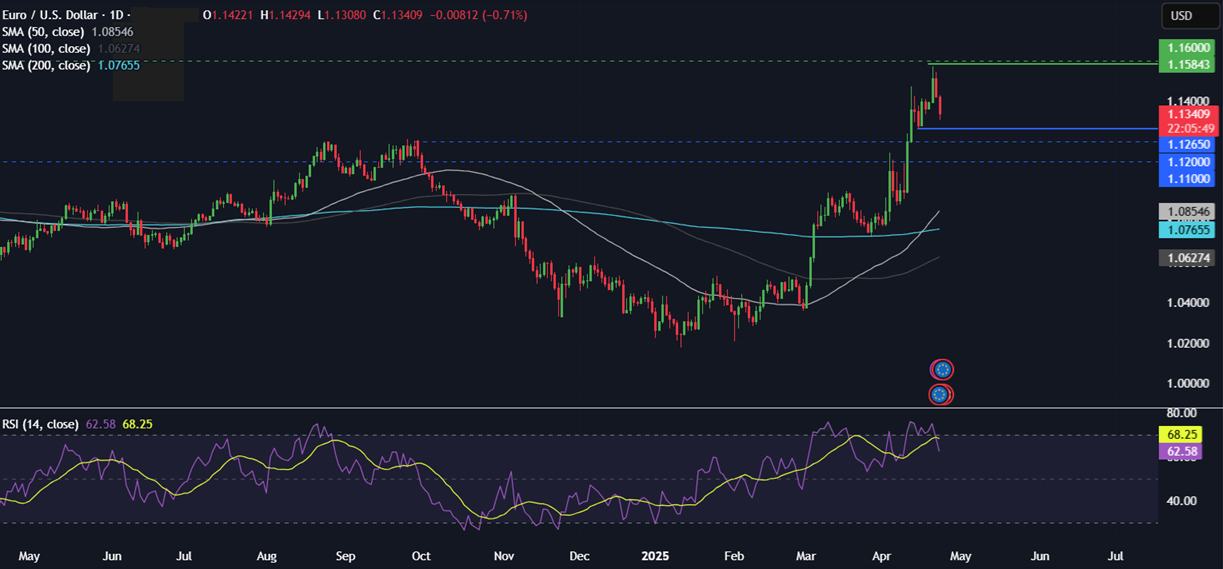
US PMIs (Wednesday)
Flash US PMI indices on Wednesday will be among the first pieces of hard economic data released since Trump’s liberation day. The data comes as Federal Reserve Chair Jerome Powell and many economists have warned of trade tariffs boosting inflationary pressures and weighing on growth. Many firms have already said that the measures make planning more difficult. Signs of weakness in PMI data for the world’s largest economy could fuel stagflation fears, pulling USD and US stocks lower.
The Dow Jones is recovering towards 40,000. Weak data could limit the recovery.

Tokyo CPI (Friday)
Tokyo CPI is considered a leading indicator for the national inflation reading, which is typically released a few weeks later. Since the last release, US tariffs have hit the market. BoJ governor Ueda has warned that higher-than-expected US tariffs raise global economic uncertainties, causing market turmoil. The central bank remains vigilant about what the US policies and wage and price trends will mean at the next BoJ policy meeting. Ueda also noted that inflation is moving towards 2% as the labour situation remains tight and inflation expectations rise modestly. His comments come after the BoJ left interest rates unchanged at 0.5% at its previous meeting in line with expectations. On the trade front, Japan has started trade talks with the US.
USD/JPY has benefited from safe-haven flows and the USD selloff. Hotter inflation data could lift the yen further.
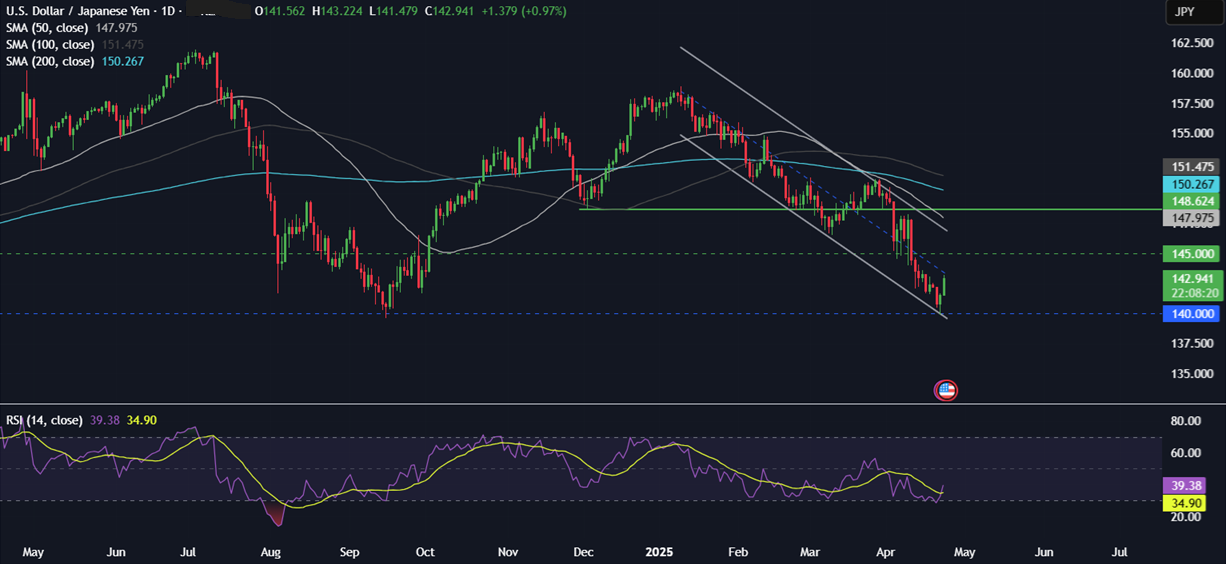
UK retail sales (Friday)
UK retail sales are expected to fall by 0.3% in March after rising by 1% in February, a much stronger than expected reading driven by non-food sales volumes. The data comes amid concerns that UK consumer confidence may have peaked as the outlook deteriorates. Rising worries over the impact of trade tariffs on the UK economy could mean the outlook deteriorates from here for consumers. For the Bank of England, retail sales don’t typically spark a significant shift in market pricing. Following the cooler-than-expected UK inflation release in March, the market is essentially fully pricing in a 25 basis point cut in May.
GBP/USD has benefited from the weaker USD but could struggle to gain much further in light of the deteriorating UK outlook.
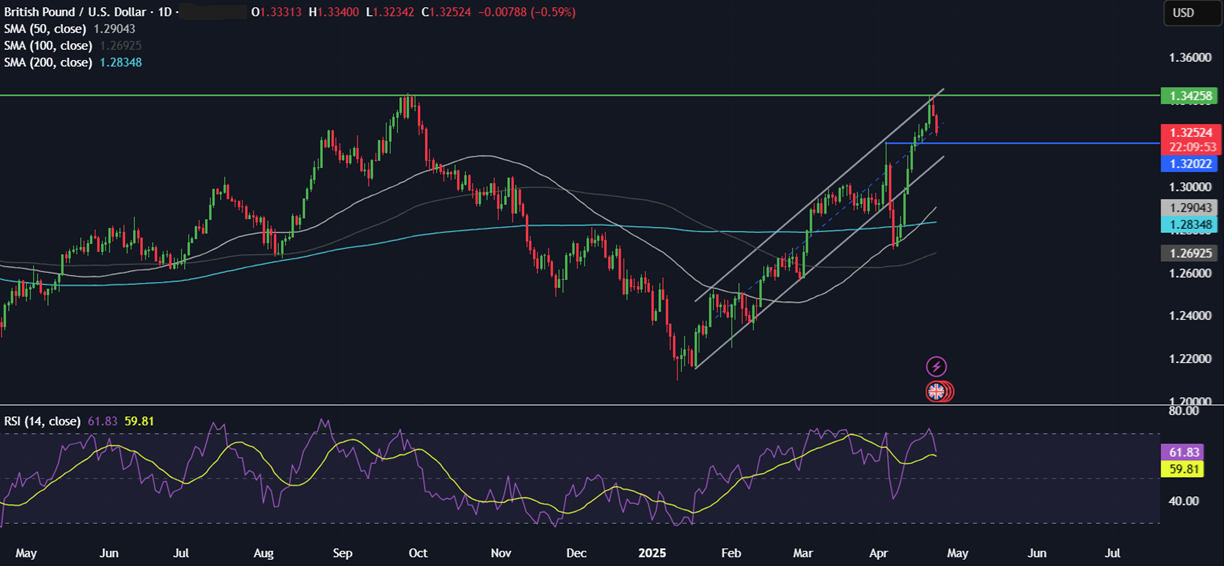
Earnings season ramps up
This week sees the earnings season and the US ramp up with corporate updates from Tesla and Alphabet, the first of the so-called magnificent 7 mega-cap tech companies to unveil their latest earnings. Investors will be looking at the figures and guidance to potentially provide some relief for markets still reeling from the massive sell-off in recent weeks sparked by U.S. President Trump’s trade tariff policies. In recent years, the magnificent 7 stocks have been the driving force behind U.S. equity market gains, but their share prices have slipped significantly so far this year. More broadly, US earnings expectations remain solid but have been lowered as investors brace themselves for the potential impact of Trump’s tariffs on economic activity. S&P 500 earnings are now expected to rise 9.2% in 2025, down from previous expectations of 14% earnings growth.
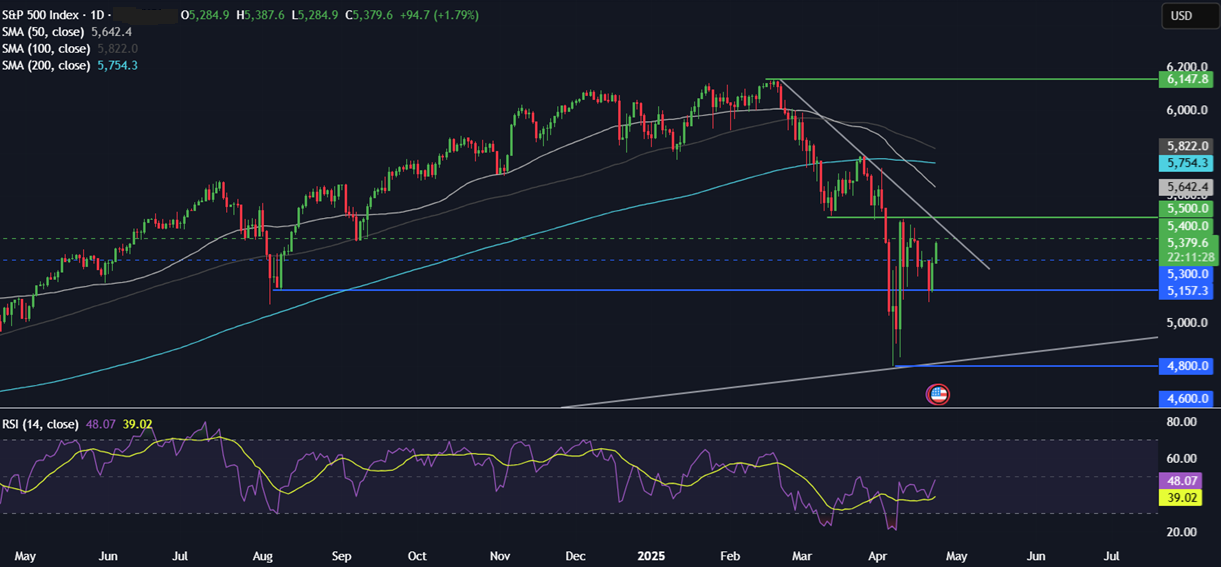
The content provided here is for informational purposes only. It is not intended as personal investment advice and does not constitute a solicitation or invitation to engage in any financial transactions, investments, or related activities. Past performance is not a reliable indicator of future results.
The financial products offered by the Company are complex and come with a high risk of losing money rapidly due to leverage. These products may not be suitable for all investors. Before engaging, you should consider whether you understand how these leveraged products work and whether you can afford the high risk of losing your money.
The Company does not accept clients from the Restricted Jurisdictions as indicated in our website/ T&C. Some services or products may not be available in your jurisdiction.
The applicable legal entity and its respective products and services depend on the client’s country of residence and the entity with which the client has established a contractual relationship during registration.




